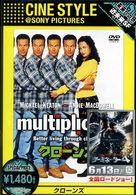Description
This volume investigates the implications of the study of populations other than educated, middle-class, normal children and languages other than English on a universal theory of language acquisition. Because the authors represent different theoretical orientations, their contributions permit the reader to appreciate the full spectrum of language acquisition research.
Emphasis is placed on the principle ways in which data from pathology and from a variety of languages may affect universal statements. The contributors confront some of the major theoretical issues in acquisition.
Table of Contents
Contents: Preface. Y. Levy, Introduction. Part I: General Theoretical Issues. N. Hyams, Nondiscreteness and Variation in Child Language: Implications for Principle and Parameter Models of Language Development. P. Bloom, Syntax-Semantics Mappings as an Explanation for Some Transitions in Language Development. I.M. Schlesinger, Two Approaches to the Acquisition of Grammar. Part II: Cross-Linguistic Persepectives. T. Hoekstra, The Acquisition of Functional Structure. E. Pizzuto, M.C. Caselli, The Acquisition of Italian Verb Morphology in a Cross-Linguistic Perspective. R.A. Berman, Developmental Perspectives on Transitivity: A Confluence of Cues. C. Pye, A Cross-Linguistic Approach to the Causative Alteration. M. Rispoli, Structural Dependency and the Acquisition of Grammatical Relations. Part III: Pathology. T. Roeper, H.N. Seymour, The Place of Linguistic Theory in the Theory of Language Acquisition and Language Impairment. M.L. Gopnik, Theoretical Implications of Inherited Dysphasia. H. Tager-Flusberg, The Relationship Between Language and Social Cognition: Lessons From Autism. Y. Levy, Concluding Chapter: Modularity Reconsidered.








